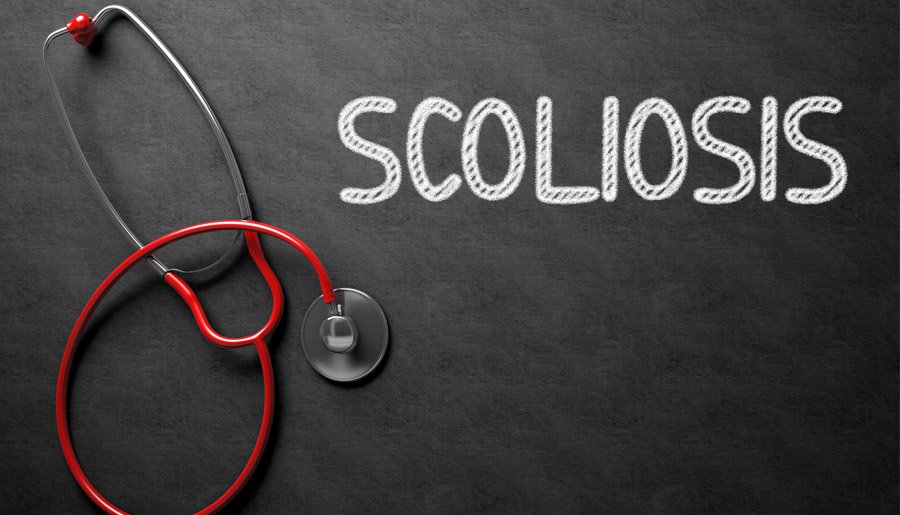What Causes Scoliosis?
That is a question I’m frequently asked and the answer is a loaded one. Most people would be surprised to learn that one does not typically learn much about scoliosis in most professional schools including medical school, chiropractic school, and physical therapy school.
Explaining what scoliosis is can be tricky. Even though healthcare professionals, such as chiropractors and physical therapists, have a good understanding of what the condition is, not everyone always fully understands the underlying causes of scoliosis.
This is an issue because a general diagnosis of a condition isn’t enough to treat it. To properly treat scoliosis, the underlying cause of the condition needs to be known. Otherwise, the treatment is only addressing the symptoms, rather than the condition itself.
With that in mind, the following guide is a breakdown of the different types of scoliosis, the causes, and some of the ways scoliosis is managed.
The Types Of Scoliosis
Scoliosis can be classified into one of two categories: structural scoliosis (also known as “true” scoliosis) and non-structural scoliosis (also known as “functional” scoliosis). Structural scoliosis involves the rotation and twisting of the spine along with lateral bending.
Although non-structural scoliosis causes the spine to bend in a similar fashion, it differs in that it doesn’t cause the spine to rotate or twist.

Structural Scoliosis
Structural scoliosis is by far the most common type of scoliosis. It’s a permanent condition that affects more people than you might realize. Recent scoliosis studies indicate that idiopathic scoliosis affects up to 5% of young people (those under 18), while adult scoliosis affects upwards of 68% of the population.
However, there are many different causes. As such, structural scoliosis is divided into four primary categories based on these causes: congenital, neuromuscular, adult-onset, and idiopathic scoliosis.
The types of structural scoliosis include the following:
Congenital Scoliosis
Congenital scoliosis results from a malformation (such as a wedged vertebra) in the spine during fetal development. It’s one of the rarest forms of scoliosis, only affecting around one in every 10,000 babies. Babies born with congenital scoliosis often have other health problems associated with the condition, such as bladder or kidney problems.
Neuromuscular Scoliosis
Neuromuscular scoliosis is typically linked to conditions that affect the nervous system, such as cerebral palsy, muscular dystrophy, neurofibromatosis, and spinal cord tumors.
In addition, neuromuscular scoliosis can be caused by abnormal muscle development or weakness resulting from the neurological condition, which causes the spine to curve in an effort to compensate for the imbalance.
Adult Onset Scoliosis
Adult onset scoliosis, also known as degenerative scoliosis, is a form of structural scoliosis which typically affects people aged 40 or over. This type of scoliosis usually starts with a rotation in the spinal segments causing uneven pressure on the facet joints and the disc. The degeneration and arthritis then sets in on the inside of the spine causing the curve to progress.
Additionally, an anatomical short leg or sacral unleveling may be a driving cause of degenerative scoliosis. This type of scoliosis may cause chronic back pain and disability and can progress quickly in people aged 50 and over. Some studies show that, on average, degenerative scoliosis in individuals 50 years and older will progress one to three degrees each year.
Idiopathic Scoliosis
Idiopathic scoliosis is the most common cause of structural scoliosis and accounts for up to 80% of all cases. This form of scoliosis results from an unknown cause and can affect otherwise healthy individuals. It typically develops during adolescence and is thought to be hereditary.
However, no definitive link has been established. There are four types of idiopathic scoliosis that are classified based on the age of the patient. These include:
- Infantile scoliosis (0-3 years)
- Juvenile scoliosis (3-10 years)
- Adolescent scoliosis (10 years to skeletal maturity)
- Adult scoliosis (developed as an adolescent but not diagnosed until adulthood)
Non-Structural Scoliosis
Non-structural scoliosis is a type of scoliosis where the spine is “functionally” curved, as the spine will appear to straighten out when the patient is lying down. Non-structural scoliosis is usually only temporary and does not involve any underlying malformation of the spine. It is not permanent and, unlike structural scoliosis, can be reversed entirely.
However, like structural scoliosis, there are a few different causes. The following are the different types of non-structural scoliosis, defined by their causes:
Antalgic Scoliosis
Antalgic scoliosis can develop when the patient favors one side of their body due to pain or discomfort. This type of scoliosis is typically seen in patients suffering from an injury or who have recently undergone surgery.
For example, if a patient has injured their right hip, they may lean to the left to ease the pain. As the pain subsides, the alignment of the spine often returns to normal.
Scoliosis Caused By A Short Leg Or Pelvic Tilt
Scoliosis can occur when one leg is shorter than the other. This difference in length causes the hips to be uneven, which can cause the spine to curve to compensate for the imbalance. A pelvic tilt, which is when one side of the pelvis is higher than the other, can also cause a scoliotic curve in the same manner.
As with antalgic scoliosis, this condition can often be corrected by treating the underlying cause. For example, placing a shoe insert or lift under the short leg. However, rehab may be required to repair any soft tissue changes.
Posture Pseudo-Scoliosis
Posture pseudo-scoliosis occurs when the spine is abnormally curved due to poor posture. It’s called “pseudo” scoliosis because it’s not true scoliosis and is not caused by any underlying malformation in the spine. This type of scoliosis can be caused by sitting in a slouched position for extended periods of time or having poor core strength.
Over time, the spine can become accustomed to the curved position and may require physical therapy to help straighten it back to normal. In most cases, the curvature often resolves with proper posture and core strengthening exercises.
Is Scoliosis Hereditary?
Researchers haven’t found a definitive answer to this question. Still, there is some evidence that suggests scoliosis may be hereditary. Research shows that there may be a genetic component to idiopathic scoliosis as there is a higher incidence of the condition among families with a history of it.
One study indicated that 30% of adolescent idiopathic scoliosis patients have a family history of scoliosis. However, no specific genes or gene groups have been identified as the cause of scoliosis.
Can Car Accidents Cause Scoliosis?
Yes, physical trauma can cause scoliosis. Physical trauma caused by a car accident can damage the spine and disrupt its normal alignment, causing a scoliotic curvature. In some cases, the trauma can even worsen pre-existing scoliosis.
The most common injury resulting from a car accident that can cause scoliosis is a spinal fracture, which occurs when one or more vertebral bones are fractured. A fracture can disrupt the normal alignment of the spine, leading to a scoliotic curvature.
Other injuries that can lead to scoliosis include soft tissue damage, dislocation of the spine, and even damage to the spinal cord.
Three Lifestyle Changes To Manage Scoliosis Symptoms
Whether you have structural scoliosis or non-structural scoliosis, several lifestyle changes can help manage the symptoms of scoliosis. The following are three lifestyle changes that can help to reduce pain and improve range of motion:
1. Maintaining Good Posture
Correct posture is paramount for people with scoliosis. Poor posture can exacerbate the condition, so maintaining proper posture is the key to managing scoliosis. Correct posture includes keeping your head in line with your shoulders and back, keeping your chest lifted and open, avoiding slouching, and standing or sitting in a balanced position.
2. Healthy Weight Management
Being overweight can worsen scoliosis as it may put extra strain on the spine. Therefore, it is important to maintain a healthy weight. This can be done through regular exercise and eating a balanced diet full of nutrient-rich foods. Doing so can help you reach and maintain a healthy weight, reducing any symptoms associated with scoliosis.
3. Engaging In Regular Physical Activity
Regular physical activity can help reduce symptoms associated with scoliosis. Exercise helps strengthen the muscles of the spine and core, which can improve posture and reduce pain. Regular exercise can also improve flexibility, range of motion, and overall well-being.
However, talking with a doctor or physical therapist before starting any exercise program is essential to ensure that the exercises are safe and appropriate for your condition.
Will Scoliosis Progress?
Whether or not scoliosis progresses depends on a variety of factors. In some cases, a mild curvature won’t progress and no treatment will be required. However, scoliosis can progress and become severe if left untreated. The age of diagnosis greatly impacts whether or not the condition will progress.
Generally speaking, if scoliosis is detected while a child is still growing it needs to be strictly monitored. However, if the curvature progresses to greater than 15 degrees, they should be treated using non-invasive methods to help prevent further progression and correct the curve as much as possible.
For some time, people believed that scoliosis progression would stop as soon as the child finished puberty. However, recent research indicates that this is not true. Scoliosis can continue into adulthood, especially if the curvature is over 30 degrees. Additionally, adults diagnosed with degenerative scoliosis can expect their condition to progress as much as one to three degrees a year.
Finally, it’s worth noting that gender plays a role in whether the condition will progress. Research has indicated that girls with scoliosis are more likely to experience curvature progression than boys with the same condition.
In the end, there’s always a chance that scoliosis will continue to progress. It’s why proper diagnosis and treatment are crucial to preventing progression.
Choose The Best Professional For Your Scoliosis Care
If you have scoliosis, then it’s vital that it is properly diagnosed. Here at Square ONE Health, we can correctly diagnose the type of scoliosis you have and any underlying conditions that may be causing it. Doing so will help us provide you with the best possible treatment plan for your individual needs.
Our treatment options include scoliosis-based exercises and stretches, bracing, science-based chiropractic techniques, and physical therapy.
